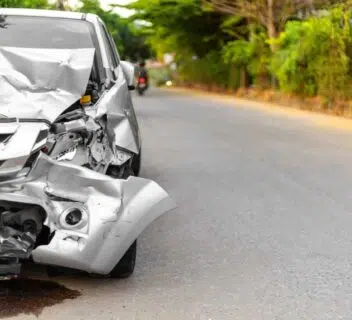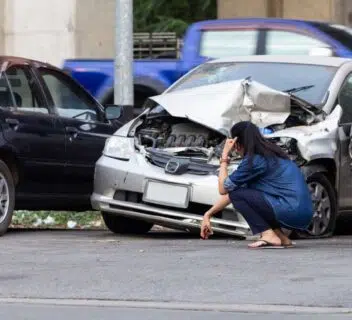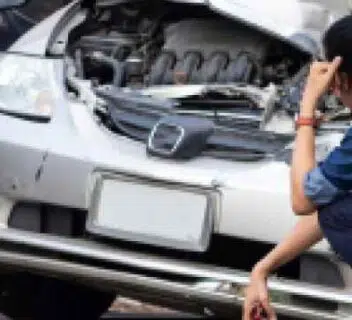What is Considered a Hit and Run?
A hit and run, by definition, is a car accident where a vehicle hits a person, object, or other vehicle, then, the driver flees the scene without providing their information. This leaves victims without any way to get compensation or medical help.
Hit and run statutes vary from state to state, however, it is usually considered the crime of a driver of a vehicle who is involved in a collision with another vehicle, property, or person, who knowingly fails to provide the necessary information. This includes his or her name, license number, and other details as required by law to the injured party, witness, or police officials.
If a vehicle has hit property and no other persons are involved, it may suffice to leave the information attached to the damaged property, provided that the person who caused the accident makes a police report.
Examples of what happens in a hit and run accident include:
- A driver hitting pedestrians in the crosswalk and then speeding off.
- A driver hitting your unattended parked car without leaving contact information or any means of collecting damages.
What are the Penalties of a Hit and Run Case?
The severity of penalties in a hit-and-run case hinges on the extent of the damage or injuries caused. Generally, you can expect the penalties to fall into one of these categories:
- Misdemeanor: This applies to cases involving property damage only, with no injuries. Fines can reach up to $1,000 and there is a potential jail time of up to one year, depending on the state.
- Felony: If the hit-and-run incident results in serious injuries or fatalities, it becomes a felony, carrying much stricter penalties. This could include fines up to $20,000, up to one year in jail, and license revocation.
Beyond the legal consequences, being convicted of a hit-and-run can have lasting impacts, including:
- Civil lawsuits: The victims have the right to pursue compensation for medical expenses, lost wages, and pain and suffering through civil suits. These lawsuits can result in substantial financial obligations for the offender.
What to Do After a Hit and Run Accident
If you are the victim of a hit-and-run, getting medical attention is the number one priority. Call the police for help if you can, otherwise call out for help from fellow drivers/pedestrians. If your injuries are not serious, it is important to remain calm and try to gather as much evidence as possible given the status of the scene. Having more information increases the likelihood of the police catching the driver who hit you, and helps your car insurance company make decisions about your claim.
Try to get information about the make, model, and license plate number of the car. Next, look around and talk to witnesses. Perhaps, they were able to view additional details about the car or can supply missing information about the driver’s profile.
Document the scene and take pictures and videos on your phone. Be sure to get different angles of your car, especially if there are remnants of paint from the other car. (This will help prove you are not attempting to defraud your insurance company.)
If the hit and run occurred when your vehicle was parked, you should also document as much information as you can – the time you discovered the damage, the location of the vehicle, and details on the damage.
While it may be tempting to go after the other car, either by driving or on foot, this may cause more harm than good. Not only are you putting other vehicles at risk with reckless driving, but also you may injure yourself further.
It is best to call the police and file an accident report that includes the details you gathered, as well as the names and contact information of witnesses you were able to find. Even if the police cannot find the driver, having an official police report can go a long way in processing your auto claim.
Contact your car insurance company. In terms of auto insurance, hit-and-run accidents are the only accident in which you are not at fault for which you will be required to pay your collision deductible, in most cases. There is no other coverage on your auto policy that will cover a hit and run, which is why you will be required to pay the deductible. If you do not carry this optional coverage, you will not have insurance benefits to cover your damage.
Seek Legal Support After a Hit and Run
The consequences of a hit-and-run can be crushing, both legally and personally. Don’t navigate this complex and stressful situation alone.
At 1-800-THE-LAW2, our network of experienced car accident lawyers is ready to fight for you. A single call connects you with the legal guidance you need. Contact us today to get connected for a free consultation.


